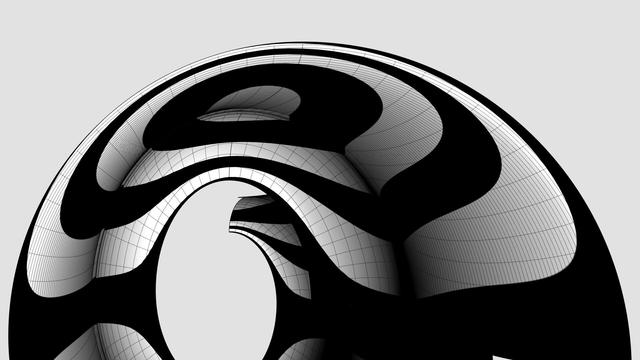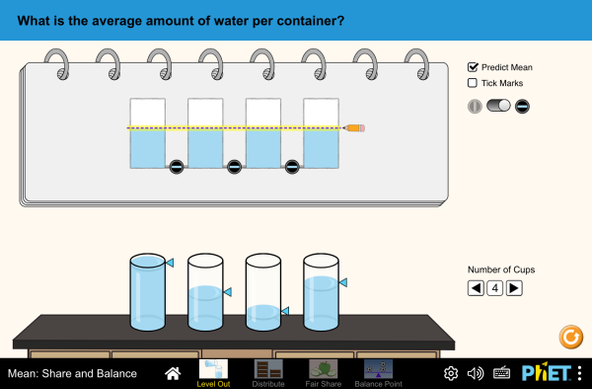The #IonicVolute is constructed as a spiral, of which there's a bewildering array of types that have fascinated artists, philosophers, and mathematicians alike for millennia. Most #CAD tools have a built-in primitive for spirals, but you will only waste your time with them because they strive for #continuous curvature changes, when only a #discrete spiral made from circular arcs will work in this design. I spent years trying different kinds and learned a lot in the process.
Even within the family of discrete spirals, there's only one that fits. Dürer's approximation of #logarithmicSpirals with 90° arcs comes close, but still doesn't fit. The only one that works is contrived to fit the measurements of the #IonicCapital, and it's not a general spiral. It's specifically designed for 3 turns, and you can only proceed in one direction — toward the eye. You cannot start at the eye and diverge outward.
The process is not complicated. I purposely left out the measurements in the sketch because they cluttered the area near the eye, but I describe them here.
When µ = 144, you will need to start with a square that is exactly 1 part (8 units) wide and divide it into smaller portions — initially 6, but eventually 24. This is the first time you might regret choosing µ = 144. If you had chosen a value 3x larger, then one part would be 24 units instead of 8. That would certainly have made understanding the volute a little easier but the other measurements would also be 3x and too unwieldy to work with.
There is a happy compromise: Temporarily scale everything up by 3x just for the volute, and once it has been constructed, scale it down to 1/3 to fit with the rest of the design.
So, the first step is to divide the square into a 24x24 grid. Then make 3 concentric squares 4 units apart and mark their ends with points 1 through 12 as shown here.
The Ionic capital is complex, but not unapproachable. We will systematically construct everything in this draft rendering using just straight lines and arcs as promised in https://pixelfed.social/p/Splines/789956327130679640, with the exception of the #cymaReversa near the top and the 3-strand braid on the ribbon.
In this rendering, the cyma reversa near the top is made using a flattened half-turn of a #helix, but it can also be constructed using elliptical arcs as I described in earlier posts.
The braid is a #periodic shape with infinite variety and is also based on a helix. You can vary the number of strands, their thickness, pitch, and so on, none of which are essential to the Ionic Order itself. They're only a jumping point for further exploration.
The eggs in the 'eggs and darts' motif can have different shapes. They can be convex like real eggs or concave as shown here, but the top is almost always sliced off. The total depth of the convex or concave shapes can vary, but only within a range of 1 part, or 8 units.
The #volutes in the front and back of the capital are based on #spiral shapes, of which there are many different kinds. Some have #continuous curvature changes, while some do it in #discrete steps, like #fibonacci spirals that can approximate #logarithmic spirals seen in nature, e.g., nautilus. When curvature changes are discrete, the spiral arms can diverge in #arithmetic, #geometric, or some other sequence.
We will construct all of these, and most notably the smooth, sweeping surface of the scrolls using just straight lines and arcs, and let the #CAD software deal with delicate #NURBS curves and surfaces.

Splines (@Splines@pixelfed.social)
This sweeping shape is a timeless design that first appeared in the scrolls of the #IonicCapital as the most distinctive part of the #IonicOrder in classical Greco-Roman architecture more than 2500 years ago. Shown here with a zebra pattern on the wireframe of a CAD model to accentuate its features and attest to the smoothness of its 3-dimensional surface, the design has been refined many times since the original version over the last two millennia. The two most remarkable things about this design are that: — It can be recreated with modern CAD tools by drawing simple 2-dimensional straight lines and circular arcs exclusively. The end result is truly breathtaking and makes one wonder how architects visualized the result and put theory into practice. In the CAD model, the ultimate surface is a #NURBS surface that uses #BSplines extensively, but none of the B-splines or surfaces need to be created "by hand." One only has to draw straight lines and circular arcs with accurate measurements snapped to grids. — For a design that has survived the ages, it is lamentable how few authoritative sources that accurately describe fine details and exact reconstruction methodology remain accessible to the general public in the age of Internet. The most comprehensive is the 10-volume tome that Marcus #Vitruvius Pollio, a Roman architect and engineer, wrote for #JuliusCaesar and his successor Emperor #CaesarAugustus. [https://www.gutenberg.org/files/20239/20239-h/20239-h.htm] I frequently use two more authoritative sources: — "Regola delli cinque ordini d' architettura," or simply #RegolaArchitettura by Giacomo Barozzi da #Vignola [https://archive.org/details/gri_33125008229458/page/n3/mode/2up], and — "A Course in Theoretical and Practical Architecture," or simply #PracticalArchitecture by Francisco Salvatore #Scarlata (#Bordonaro), which documents #VignolaProportions in tabular form [https://babel.hathitrust.org/cgi/pt?id=mdp.39015031201190&view=1up&seq=5]
La #discrète #révolte des #salariés de la #tech ( #US #USA ) contre le #virage #trumpiste ( #trump ) de leurs #patrons
La discrète révolte des salariés de la tech contre le virage trumpiste de leurs patrons
Le revirement stratégique de Mark Zuckerberg et d’autres dirigeants de la Silicon Valley n’a pas déclenché de mouvement social parmi les travailleurs du numérique aux États-Unis. Mais “The New York Times” identifie des “actions de résistance plus subtiles”.
La discrète révolte des salari...
時序資料的異常偵測方式
剛好上個禮拜才整理舊的資料,寫了一篇關於用 z-score 偵測時序資料 (time-series data) 中的異常:「用 z-score 抓出異常的量」。
昨天就在 Hacker News 上面看到有論文整理這十年來對時序資料的異常偵測方式:「Time-Series Anomaly Detection: A Decade Review (arxiv.org)」,論
#Computer #Murmuring #Science #algorithm #anomaly #data #detection #discrete #fourier #series #time #transformer


